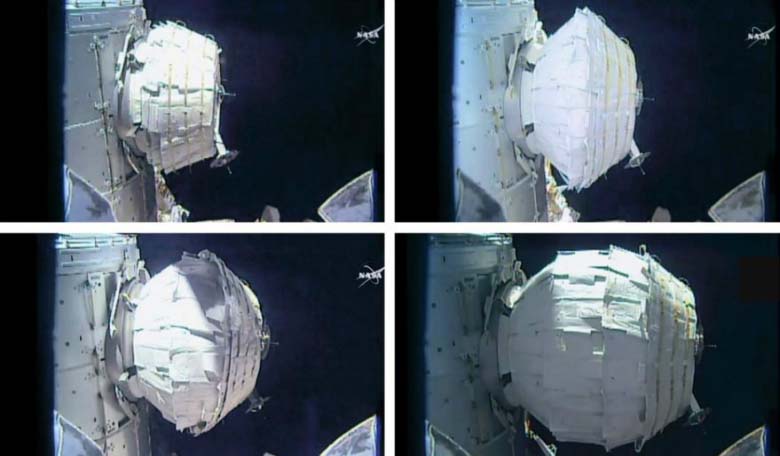The Bigelow Expandable Activity Module (BEAM) has expanded to its full size.shortly after 4 p.m. EST on May 28th. Ground controllers worked for over seven hours with ISS astronaut Jeff Williams to ensure BEAM deployed successfully. Shortly afterwards, air tanks inside BEAM released air to bring the module's pressure to that of the rest of the station. The deployment was a complete success, despite earlier issues with the experimental module.
The Bigelow Expandable Activity Module is an experimental expandable space station module developed by Bigelow Aerospace, under contract to NASA. In 2012, Bigelow Aerospace was awarded a $17.8 million contract to construct BEAM as part of NASA's Advanced Exploration Systems (AES) Program.
The deployment process for BEAM was long and tedious. In order for BEAM to reach its full size, air had to be added manually and gradually. At times, Williams was asked to open the valve for as little as just one second so that NASA ground controllers could see how the added air impacted the expanding module.
This was NASA's second attempt to deploy BEAM. An earlier effort on May 26th was stopped short, as after a few hours the module did not expand as expected. According to NASA officials, the slow deployment was caused by unexpectedly high friction between folded fabric layers of the module.
Astronauts are expected to enter BEAM in about a week, after leak checks and other tests are conducted. Sensors will be attached to BEAM's interior but otherwise the module will remain undisturbed. BEAM will be at the International Space Station for a period of at least two years, during which testing on the use of expandable modules for deep space habitats and commercial space stations will be conducted.











